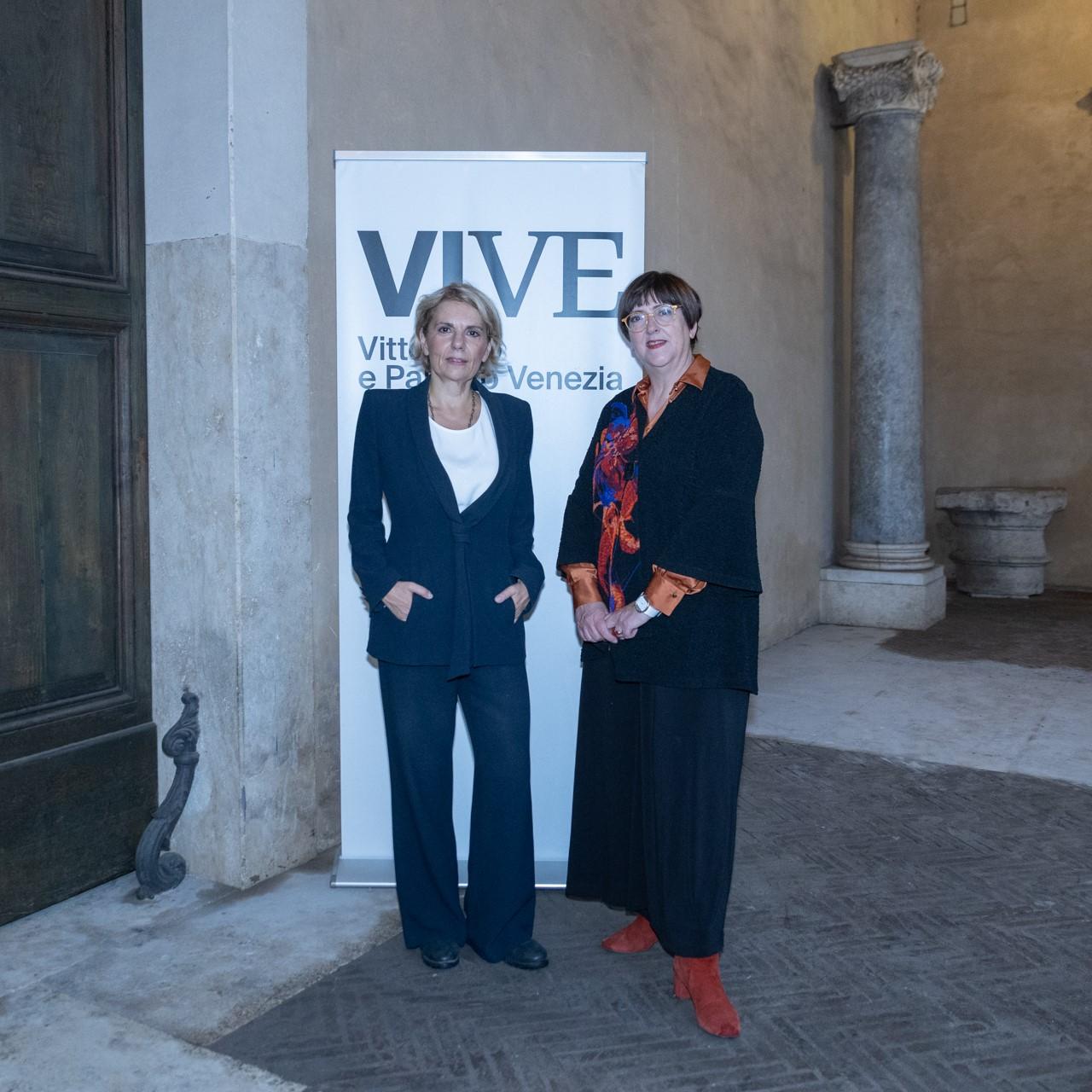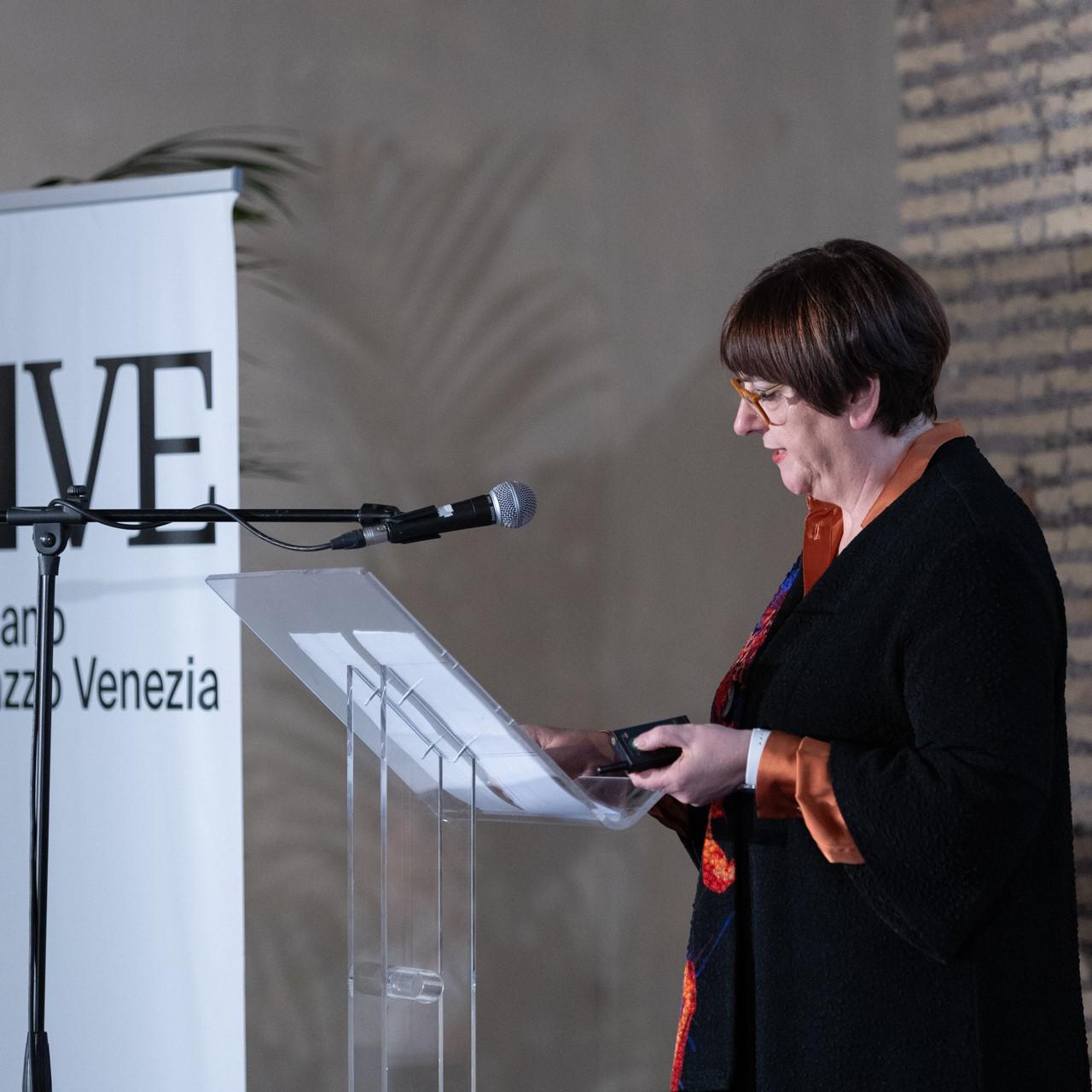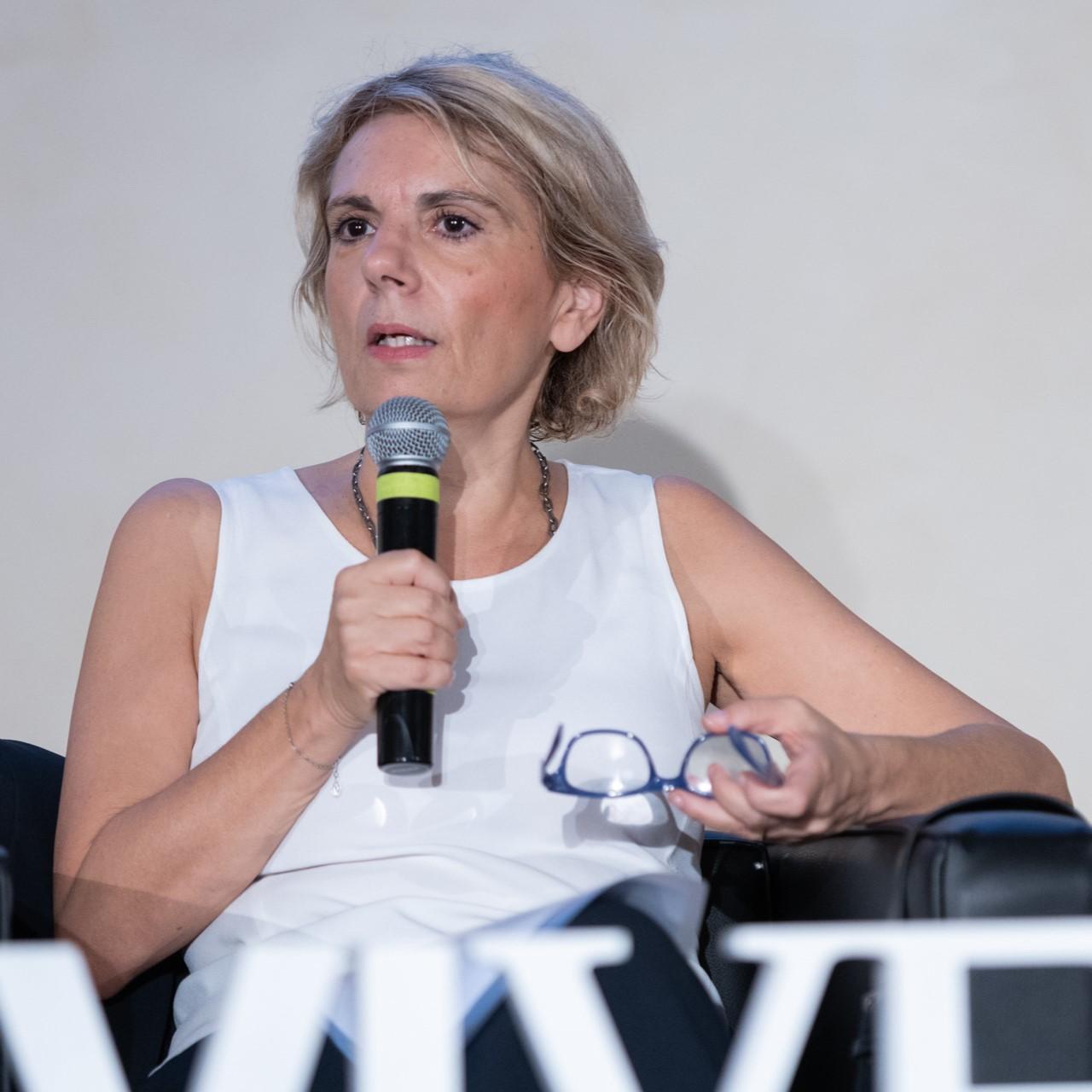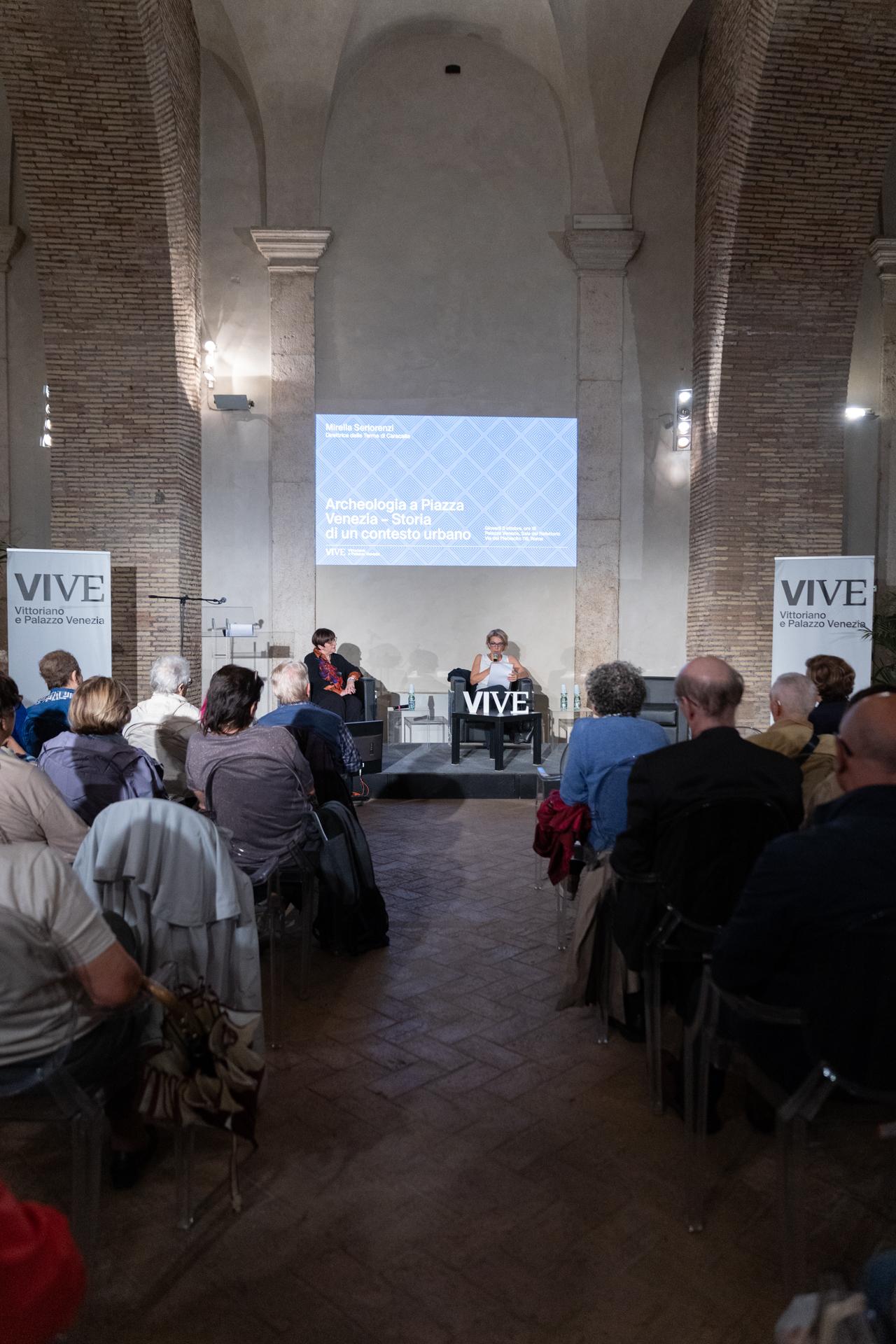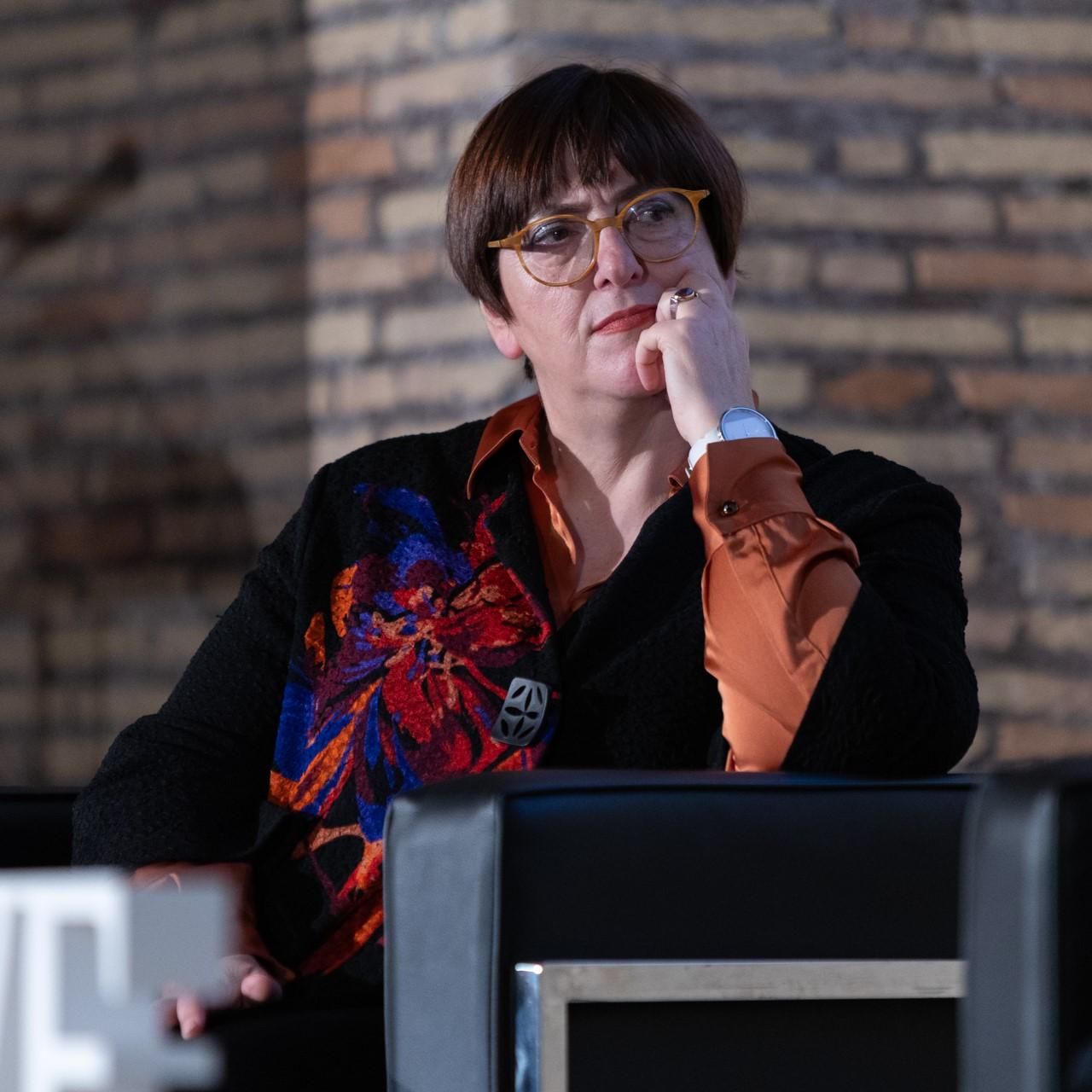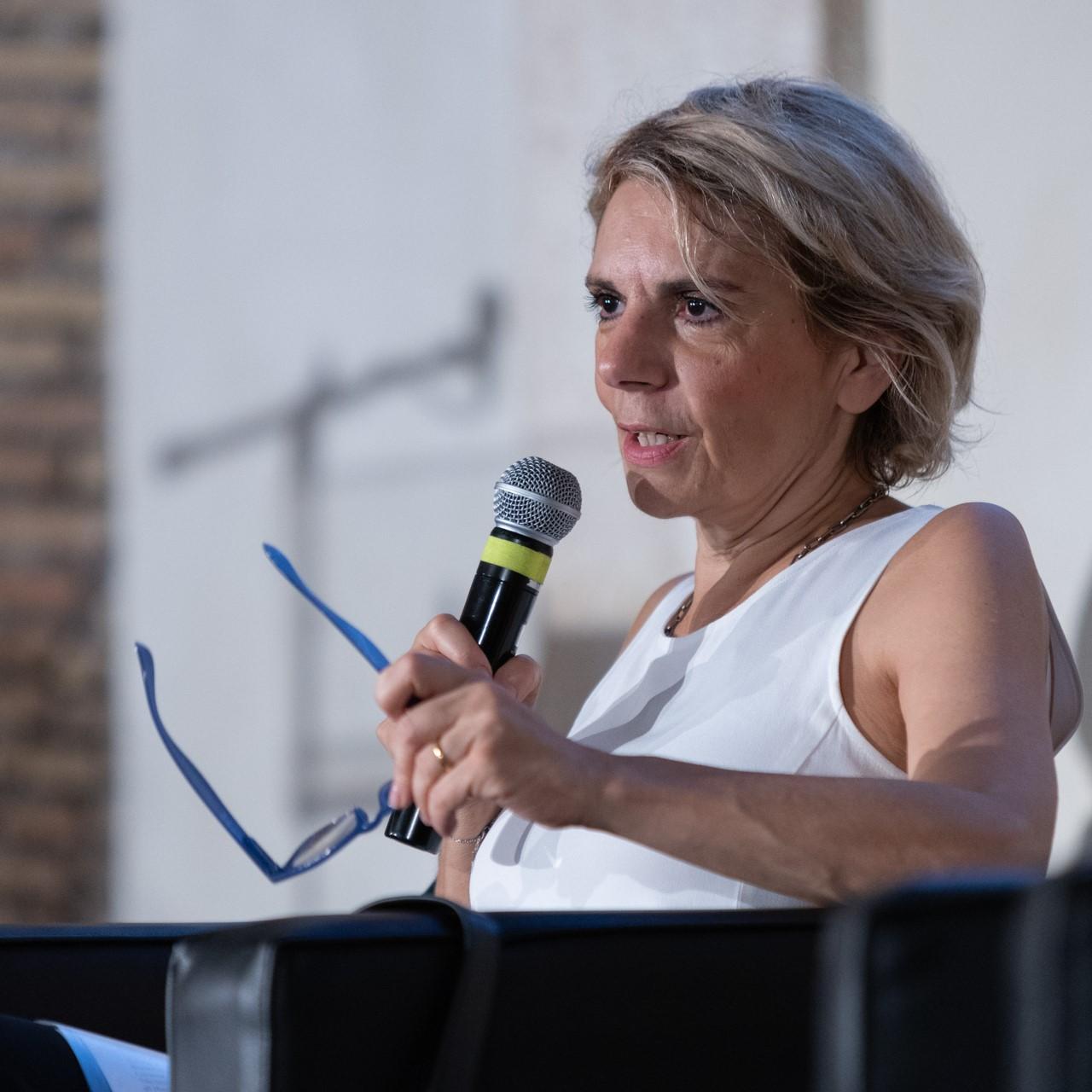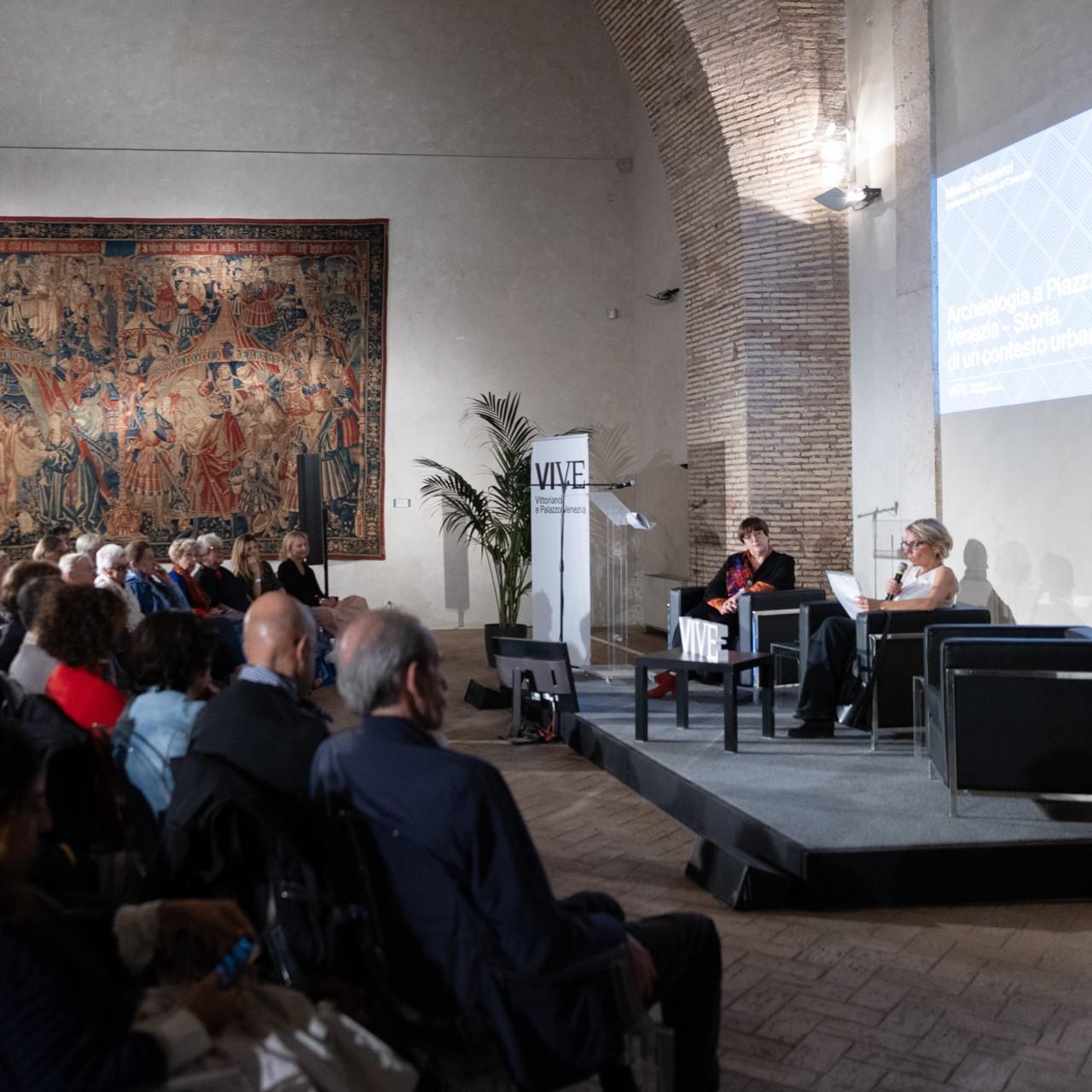SERIES: Landscapes of the Center of Rome
SPEAKER: Mirella Serlorenzi, Director of the Baths of Caracalla
DATE: Thursday, October 3, 6 pm
How has the area of Piazza Venezia changed over time? This is the question we will try to answer by traversing XX centuries of history. Thanks to archaeological excavation, it is possible to reconstruct vanished contexts of which historical sources leave no traces. Certainly, the area has always been inhabited, but few know that during the Byzantine reign, at the behest of Emperor Justinian, the mint that produced bronze coins was located here. On the same site, a few centuries earlier, stood the Athenaeum, a building for higher studies, debates, and lectures. Emperor Hadrian wanted to create a specific and functional architectural typology for that academic institute, a kind of university, in which the best lecturers were appointed by the emperor himself and salaried through the imperial treasury, to endow the city with a cultural organism of the highest level. In modern times the area sees a final use of the ruins of the prestigious Roman building to support the foundations of the Fornari Hospital, of which only the church of S. Maria di Loreto remains in view today. As in a kaleidoscope, the fabrics of the city are born, changed, destroyed, or partially preserved, giving rise to new landscapes that are the sum of many cities.
A journey through time that will allow us to discover this very central area of Rome.

